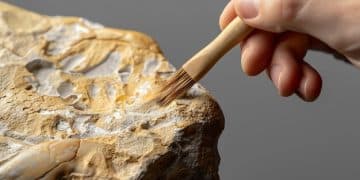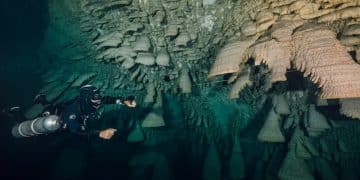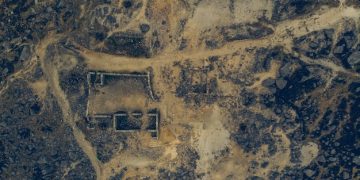Unearthing History: The Archaeology of Conflict in the US
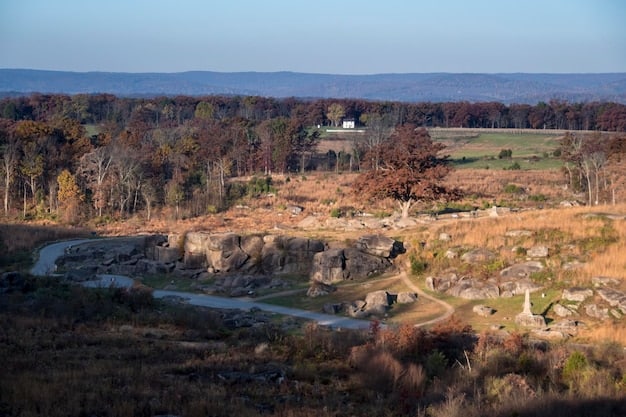
The Archaeology of Conflict: Unearthing Battlefields and Fortifications from US History offers a tangible connection to the nation’s past, revealing insights into military strategies, daily life, and the human cost of war through the careful excavation and analysis of conflict zones.
The soil beneath our feet holds silent witnesses to the clashes that have shaped the United States. The Archaeology of Conflict: Unearthing Battlefields and Fortifications from US History allows us to understand events from a unique perspective. By examining the physical remnants of battlefields and military sites, archaeologists piece together narratives that complement and sometimes challenge traditional historical accounts. Why is this field so important in the US? Let’s delve into the fascinating world of conflict archaeology.
Understanding the Scope of Conflict Archaeology in the United States
Archaeology provides valuable insights into the past, and in the United States, the archaeology of conflict is a vibrant field. This discipline focuses on revealing stories of war and social unrest through the material remains left behind. Examining battlefields, fortifications, and related sites offers a unique perspective on pivotal moments that have shaped the nation.
What are the Primary Goals?
Conflict archaeology aims to go beyond written records by studying artifacts and landscapes. This helps to understand not only the strategies and outcomes of battles but also the everyday experiences of soldiers and civilians affected by conflict.
- To uncover tactical layouts and troop movements during battles.
- To analyze weaponry and military technology used at the time.
- To understand the living conditions and daily routines of soldiers.
- To assess the impact of conflict on civilian populations and landscapes.
By digging into these sites, archaeologists can add layers of understanding that written documents and memoirs may not capture.
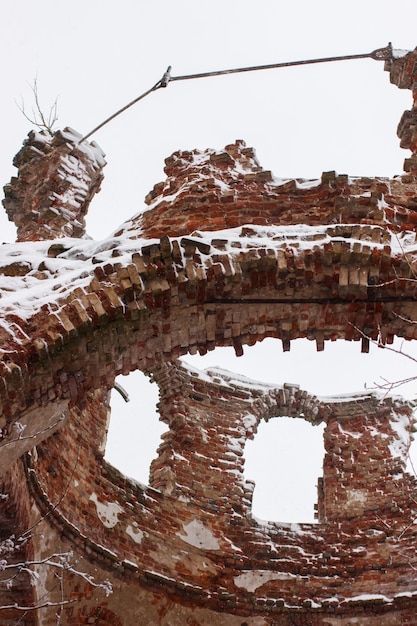
Key Archaeological Sites Related to US Conflicts
The history of the US is punctuated by numerous armed conflicts, each leaving a distinctive archaeological footprint. Exploring these sites provides tangible evidence of battles and military life, enhancing our comprehension of these critical historical periods. Let’s examine some of the most significant locations where the archaeology of conflict has yielded valuable information.
Jamestown Fort (1607)
Jamestown, one of the earliest English settlements in North America, was the site of significant conflict with local Native American tribes. Archaeological excavations have revealed the fort’s layout, weaponry, and the harsh conditions faced by the early colonists, including defensive measures and evidence of warfare.
Little Bighorn Battlefield (1876)
The Little Bighorn Battlefield, often called Custer’s Last Stand, is a powerful example of conflict archaeology focusing on Native American warfare. Archaeological studies have helped to reconstruct the sequence of events during the battle and provide insights into the tactics and weaponry used by both the US Army and the Native American warriors.
Pearl Harbor (1941)
The surprise attack on Pearl Harbor on December 7, 1941, precipitated the United States’ entry into World War II. Submerged archaeological work and land excavations continue to reveal details about the attack, the ships that were sunk, and the lives lost on that fateful day. The ongoing research provides valuable lessons about military strategy and the consequences of unpreparedness.
The Revolutionary War: Archaeological Perspectives
The American Revolutionary War was a defining moment in US history. The conflict reshaped the political landscape and laid the foundation for the nation’s identity. The Archaeology of Conflict: Unearthing Battlefields and Fortifications from US History during this period provide vital information about the realities of war. Archaeological investigations have yielded crucial insights into the military strategies, troop movements, and daily lives of soldiers. By studying these sites, historians and researchers gain a greater understanding of the challenges and sacrifices made during this pivotal time.
Battlefields and Fortifications
Several Revolutionary War battlefields and fortifications have been extensively studied by archaeologists. Sites like Valley Forge, where the Continental Army encamped during the winter of 1777-1778, have revealed details about the harsh conditions endured by the soldiers. Discoveries of hut foundations, personal items, and military equipment paint a vivid picture of life in the encampment.
- Excavations at Saratoga have illuminated the strategic importance of the battles that took place there.
- Archaeological work at Yorktown has provided insights into the final siege that led to British surrender.
- Sites like Fort Ticonderoga offer a glimpse into the logistical and military preparations of both sides.
The Civil War: Unearthing a Nation’s Trauma
The American Civil War was one of the most transformative events in US history. The Archaeology of Conflict: Unearthing Battlefields and Fortifications from US History offers insights into the strategies, technologies, and human experiences of this conflict. Battlefields scattered across the country serve as poignant reminders of the battles fought and the lives lost.
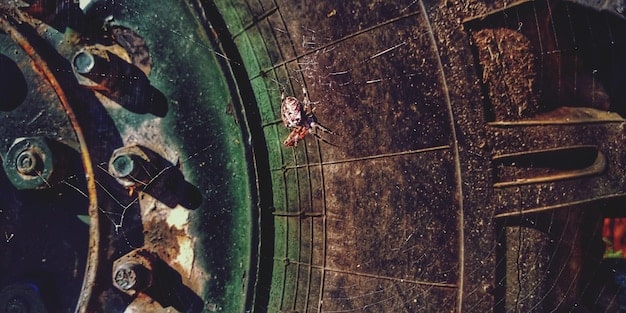
Key Battlefields and Discoveries
Sites such as Gettysburg, Antietam, and Vicksburg have been extensively studied. Archaeology has revealed details about troop movements, artillery placements, and the makeshift living conditions of soldiers. The artifacts recovered from these sites, including personal items, medical supplies, and weaponry, provide a tangible link to the past.
Fortifications and Military Installations
Coastal forts like Fort Sumter, where the first shots of the Civil War were fired, and Fort Pulaski, which demonstrated the effectiveness of rifled cannons, offer insights into military technology and strategy. Archaeological investigations at these sites illuminate the evolution of military engineering and the impact of technology on warfare.
The Role of Technology in Conflict Archaeology
Advancements in technology have significantly enhanced the field of conflict archaeology. Modern tools and techniques allow us to explore sites with greater precision and uncover details that were previously inaccessible. The integration of these technologies has revolutionized how we study the archaeology of conflict and understand historical events.
Remote Sensing and GIS
Remote sensing technologies, such as LiDAR (Light Detection and Ranging) and aerial photography, allow archaeologists to map and analyze landscapes without disturbing the soil. GIS (Geographic Information Systems) enables the creation of detailed maps and models that integrate various data sources, providing a comprehensive view of archaeological sites. These tools are invaluable for identifying potential excavation areas and understanding the spatial relationships between different features.
Geophysical Surveying
Geophysical surveying techniques, including ground-penetrating radar (GPR) and magnetometry, help archaeologists to detect subsurface features such as buried structures, trenches, and artifacts. These non-invasive methods allow for targeted excavation, minimizing damage to the archaeological record.
- LiDAR and aerial photography enhance landscape analysis.
- GIS helps in creating detailed site maps.
- GPR detects subsurface features.
- Magnetometry identifies magnetic anomalies.
| Key Point | Brief Description |
|---|---|
| 🔍 Battlefield Excavation | Reveals tactics, weaponry, and soldier life. |
| 🛡️ Fortification Analysis | Explores military engineering and strategic defense. |
| 📜 Historical Context | Adds depth to written records, challenging assumptions. |
Frequently Asked Questions
It focuses on understanding past conflicts through the study of battlefields, fortifications, and other war-related sites. This offers insights into military tactics, soldier experiences, and the broader impact of war.
Conflict archaeology provides tangible evidence and unique perspectives that complement written records. It can confirm, challenge, or add nuance to historical narratives by examining physical remains.
These include battlefields, military camps, fortifications, and prisoner-of-war camps from various periods of US history. Each site offers different information about the specific conflict.
Technologies such as LiDAR, GPS, GIS, ground-penetrating radar (GPR), and metal detectors are used to locate, map, and analyze archaeological sites. These tools help to uncover subsurface features and artifacts.
Artifacts found often include weaponry, military equipment, personal items, and human remains. These artifacts can provide detailed information about the lives of soldiers and the circumstances of battles.
Conclusion
The Archaeology of Conflict: Unearthing Battlefields and Fortifications from US History provides a vital link to understanding the American past. By examining material remains, we gain new insights into battles, military life, and the human cost of war. This interdisciplinary field enriches our understanding of significant historical events and offers a tangible connection to those who came before us.
